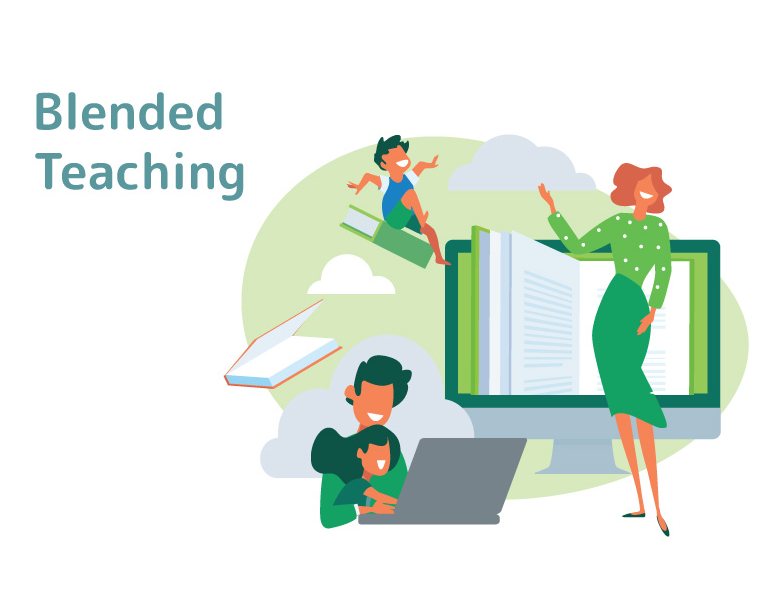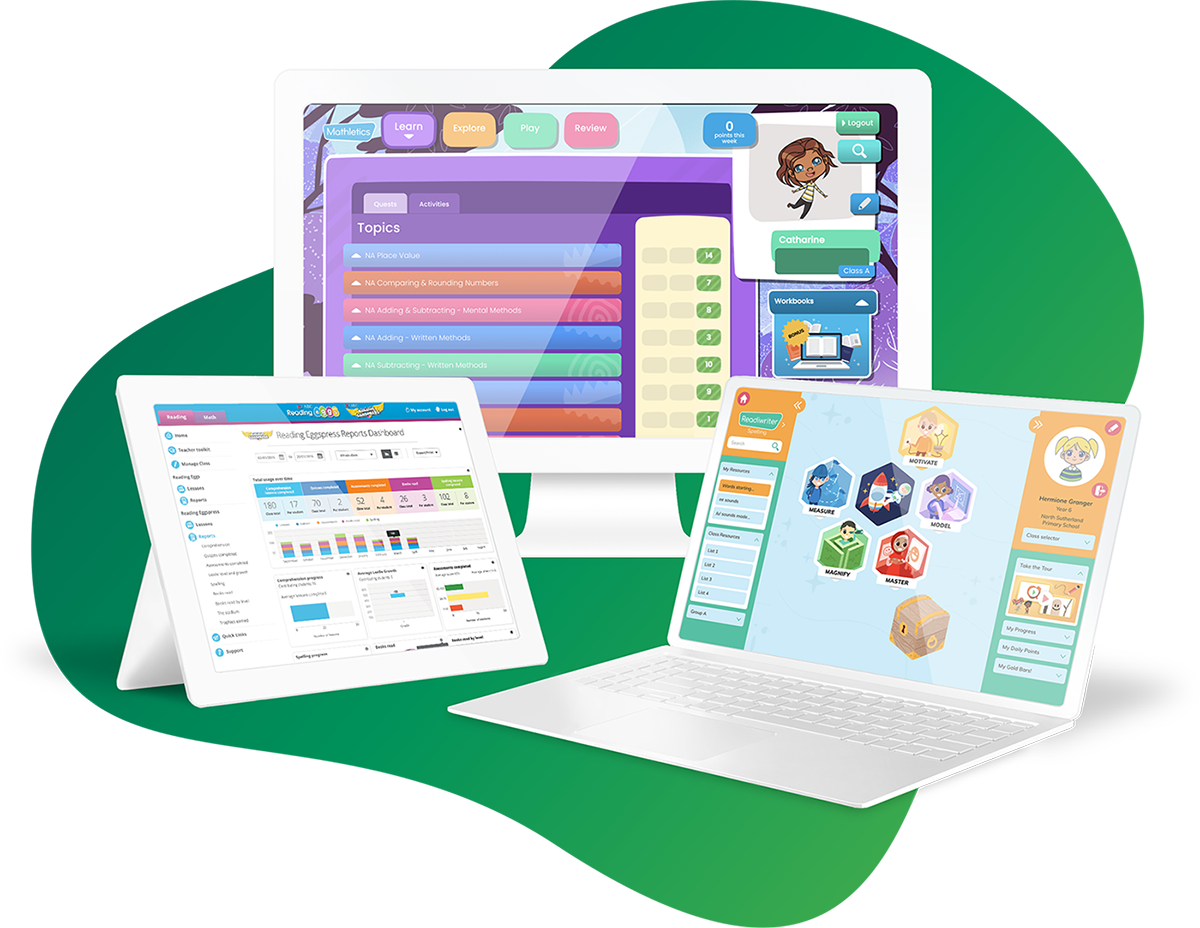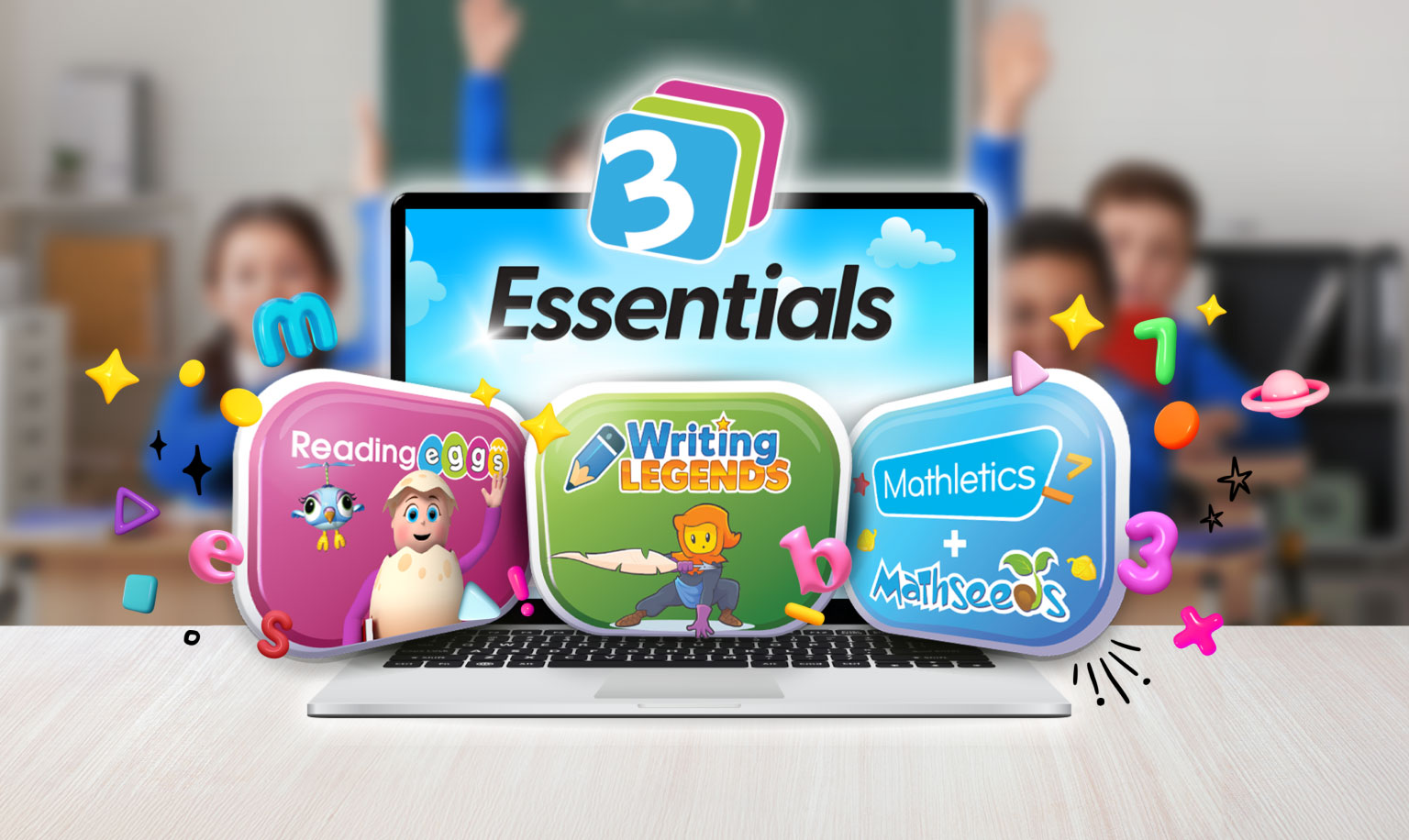
For decades, teachers and researchers alike have suggested that a blend of digital and traditional strategies will characterize the learning of the future.
Now, after the massive disruptions forced us to put this theory into practice, what we understand about ‘blended learning’ has changed.
The pandemic showed us that whether or not student learning is “blended” is beside the point. The end goal of student progress is the same.
Instead of a new model of student learning, technology has enabled a new approach to teaching. One combining the best parts of established classroom practice with digitally enhanced strategies.
The result?
Blended teaching.
We’ve compiled everything you need to know about blended teaching here, so you can develop a model that delivers better student results, engagement, and learning experiences.
What is blended teaching?
Blended teaching is an instructional approach that uses digital strategies in tandem with best practice in the classroom.
In some blended classrooms, digital and face-to-face teaching may alternate according to a fixed schedule. For example, students might take one class on campus and another one entirely online. This approach is common in universities, where blended teaching has been prevalent for some time.
In a school classroom, blended teaching is likely to be more flexible. It simply means teachers can draw from a comprehensive toolbox of traditional and digitally enhanced strategies to best meet the needs of their students.
How to get started with blended teaching
Here are four simple ways to bring a blended approach into your classroom.
Switch to digital resources
Take the easy step of digitizing your resources before you start modifying your instruction. Instead of frantically running off 30 worksheets each morning, upload the document to your LMS in editable form. It’s a time saver that also achieves the impossible – students will never be able to lose anything you give them again.
You don’t just save on photocopying time either when you switch to soft copies. Think of the hours you’ve spent combing the internet for information and engaging material – only to cobble it into a time-sucking, colorless Word document you can physically distribute. You can save all that time if you simply link to students to a video, website, or image via your LMS.
Video tutorials, podcasts, online games, and illustrated reference material will also light students up more than a stack of drab handouts. They connect with the digital world in which students live and present content in engaging, dynamic ways we can’t always achieve on paper.
Encourage online student collaboration and discussion
Alternate in-class collaborative activities with online ones and you’ll start to notice some new voices making themselves heard (or read, as it were). This is because the online learning environment:
- provides a safer space for students who seldom speak up in a live classroom setting
- promotes thoughtful and considered written communication
- allows students (and you) to read individual contributions as many times as needed
- ensures no voice goes unheard.
Most LMSs make peer-to-peer communication possible with discussion boards, so set one up next time you’re seeking student opinions or diving into a nuanced topic.
Blend traditional assessments with digital ones
Using technology in formative and summative assessments opens up the possibility of engaging tasks students can’t do on paper. It also allows you to extend tasks and invite deeper thinking. For example:
- Students writing a narrative could also digitally design a front cover reflecting the themes of their story.
- Students practicing a skill in gym or physical education could record themselves and then analyze their movements to improve.
- A standard oral presentation could be recorded as a podcast or video with engaging multimedia elements.
- In mathematics, students could test their skills against peers around the globe via Mathletics Live Challenges.
Teachers also have a lot to gain from this approach. Assessments using digital and online tools don’t translate to stacks of paperwork, and they’re significantly easier to mark and manage. Some programs, like our Mathletics and Reading Eggs, do the marking for you.
Find a step-by-step breakdown of more assessment strategies here.
Digitally enhance the things you already do
Instead of forcing unfamiliar strategies into your teaching, think about how you can digitally enhance your existing practice.
For example:
- Film part of a lesson and upload it for absent students to watch at home. As you become more confident you can experiment with flipping the classroom and creating engaging lecture videos.
- Let students collaborate in a shared document instead of on a piece of paper. It’s far less messy, and the same strategy can be utilized outside regular class times.
- Display your students’ work on a class blog. It’s the perfect platform for celebrating everything from short stories to artworks.
- Instead of specifying a final product for project-based learning, let your students choose. Free them up to create a short film, digitally designed poster, or social media content. You’ll be amazed at what they can do with technology, without your help!
- Bring the verbal dynamics of the classroom into online discussions. Using message boards and text-based communication gives introverted students a chance to shine.
- Use gamified learning programs synced with your curricula, such as Mathletics or Reading Eggs, for homework assignments. You’ll still hit the same curriculum objectives, but the engagement factor means it won’t feel like “homework” for your students.
- Link learning to the real world via the Internet, and let your students connect with people, places, and opportunities well beyond the classroom.
Don’t be afraid to experiment
Effective blended teaching begins with experimentation, so trial different digital tools and strategies to see what works. Some will become pillars of your everyday practice, while others will fail not long after students open their laptops.
And that’s OK. Only by taking a risk and experimenting can we know what works best for our students.
If you’re in any doubt about what does work, ask your students! Use their feedback to develop strategies tailored to their needs.
Use technology meaningfully
Blended teaching involves so much more than putting students in front of computers to tick the “technology box”. Instead, the digital components of a blended approach should themselves be a vital and meaningful part of student learning.
You can use the SAMR model to determine how meaningful a role technology plays in your chosen strategies. Ideally, any technology you use in blended teaching should significantly augment or transform students’ learning.
The good news? Meaningful blended teaching doesn’t mean increasingly complex technology. It’s the small, easy technological initiatives that will slot seamlessly into your teaching and make the biggest difference to your students. Don’t feel the need to become a tech guru overnight!

Blend the best parts of online and offline learning with our programs
Sources
The Basics of Blended Instruction – Educational Leadership Magazine
What blended learning is and isn’t – Blended Learning.org










